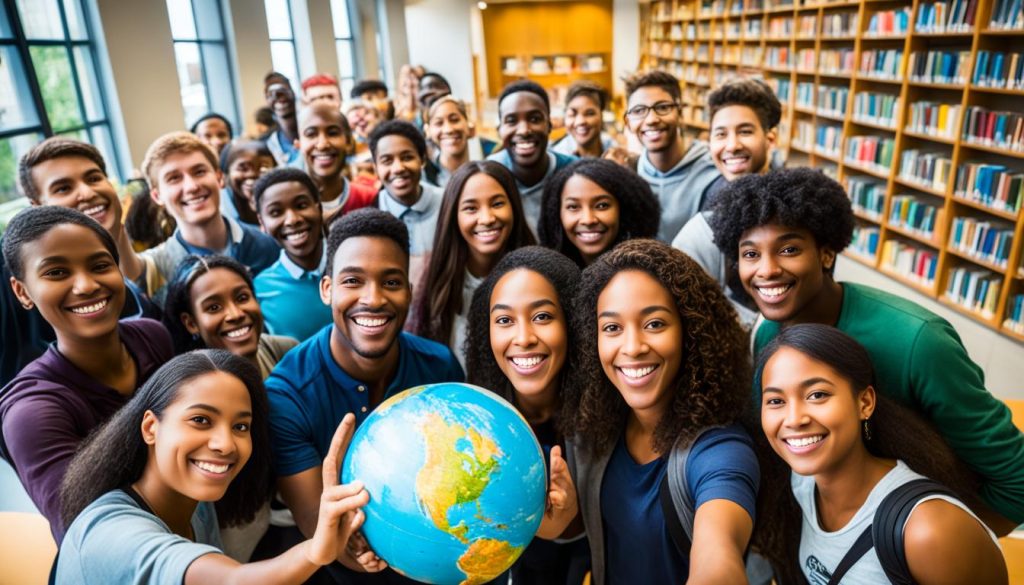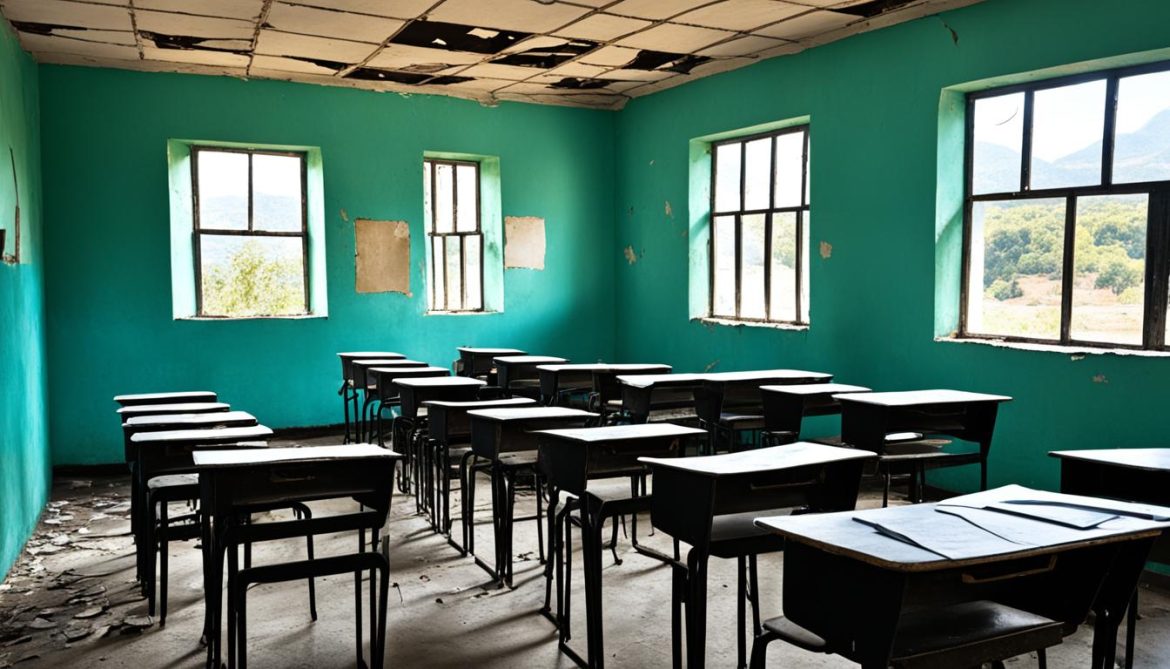When it comes to education, parents often consider private schools as an option for their children. Private schools offer smaller class sizes, dedicated teachers, and enhanced safety measures, making them an attractive choice. However, it’s important to understand that private schools also come with their fair share of drawbacks.
A recent study from the University of Virginia challenges the assumption that private schools are superior to public schools, particularly for students from low-income families and those enrolled in urban schools. While private schools may offer more academic opportunities and resources, they also have some substantial disadvantages that need to be considered.
Key Takeaways:
- Private schools may not be the best option for all students, particularly those from low-income families or urban areas.
- While private schools offer academic opportunities and smaller class sizes, they also come with higher costs and limited diversity.
- The assumption that private schools are superior to public schools is not supported by research, as socioeconomic factors play a significant role in student success.
- Educational equity should be a priority, focusing on improving access to quality education for all students.
- It is essential to consider the drawbacks of private education when making decisions about your child’s education.
The Supposed Benefits of Private vs. Public School
When it comes to choosing the right education for your child, the debate between private and public schools is a common one. Each type of school offers unique advantages and disadvantages. Private schools, for instance, provide a varied and challenging educational experience that goes beyond the standard curriculum.
One of the key benefits of private school education is the opportunity for students to participate in a wide range of extracurricular activities. From sports teams to art clubs, private schools often offer a diverse array of options to cater to different interests and talents. These activities not only promote holistic development but also foster teamwork and leadership skills.
Additionally, private schools often provide advanced academic programs that challenge students and encourage them to reach their full potential. These programs may include honors or AP courses, specialized tracks, or enrichment programs in areas such as STEM, humanities, or the arts. By offering a more rigorous curriculum, private schools help students excel academically and prepare them for future success.
Another advantage of private schools is their smaller class sizes. With fewer students in each classroom, teachers can provide individualized attention, address students’ unique learning needs, and foster a more personalized learning environment. This allows for more meaningful interactions between students and teachers, leading to better academic support and overall engagement.
Private schools also tend to have access to better resources, both in terms of facilities and educational materials. Whether it’s state-of-the-art science labs, comprehensive libraries, or cutting-edge technology, private schools often invest in providing students with the tools they need to thrive. These resources enhance the learning experience and contribute to a more well-rounded education.
When it comes to extracurricular activities, resources, and advanced programs, private schools generally offer more options compared to public schools. However, it’s important to recognize that public schools have their own set of advantages. Public schools are funded by taxes, which allows them to provide education to a broader range of students and offer a more diverse student population.
In summary, private schools offer a range of benefits including diverse extracurricular activities, advanced programs, smaller class sizes, and better resources. These advantages contribute to a well-rounded education and can potentially lead to higher standardized test scores. However, it’s essential to consider the individual needs and circumstances of your child before making a decision. Whether you choose private or public education, what matters most is finding the right fit for your child’s unique educational journey.
An Overview of the New Study
Researchers from the University of Virginia conducted a comprehensive study to compare the effectiveness of private and public education. The study aimed to provide insights into the outcomes of students attending private schools compared to those in public schools. It explored the impact of various factors, including socioeconomic backgrounds, on student success.
The study found that while private school students may tend to outperform their public school counterparts, this difference in performance can be attributed more to socioeconomic factors rather than the quality of education provided by the schools themselves. It suggests that the advantages observed in private school outcomes may stem from the privileges associated with wealthier backgrounds, rather than inherent advantages of private education.
This research challenges the conventional assumption that private schools are inherently superior to public schools. It sheds light on the importance of considering the socioeconomic context when comparing the academic achievements and overall success of students from different educational settings.
“The study reveals that the disparities in student performance between private and public schools are influenced by socioeconomic factors, emphasizing the need to address educational inequalities and provide equitably accessible quality education for all students.”
The findings of this study not only challenge common perceptions surrounding private education but also offer valuable insights into the complex dynamics that influence student outcomes. It calls for a more comprehensive approach to improving education beyond focusing solely on the type of institution, emphasizing the significance of addressing socioeconomic disparities and promoting equitable access to quality education.
Through a critical examination of the research findings, we can gain a deeper understanding of the factors that contribute to student success and work towards creating a more inclusive and equitable education system for all.
Are Private Schools Really Better Than Public Schools?
When it comes to the ongoing debate between private and public schools, the question of which is better often arises. While research suggests that private school graduates may have better long-term outcomes, it’s essential to consider the demographics of the students who attend private schools.
Private schools typically enroll students from wealthier backgrounds, and this socioeconomic advantage can contribute to their success. However, it is crucial to note that the effectiveness of private education cannot be solely attributed to the schools themselves.
Instead of prioritizing private schools, the focus should be on improving overall access to quality education. By addressing the disparities in resources, funding, and opportunities among all schools, we can offer a fair chance of success to students from all backgrounds.
“The true measure of the effectiveness of private education lies not only in the academic achievements of its graduates but in the overall equity and inclusivity of our education system.”
To gain a more accurate understanding of the comparison between private and public schools, it is essential to consider the broader context of educational outcomes and the impact of socioeconomic factors. By striving for a more equitable education system, we can ensure that every student has an equal opportunity to thrive.
Drawbacks of Private Education in 2023
While private schools offer certain advantages, it’s important to acknowledge the drawbacks and criticisms associated with private education. In 2023, these disadvantages continue to be a significant concern for families considering private schooling.
Lack of Diversity
One of the main criticisms of private schools is their lack of diversity. With higher tuition costs and limited financial aid opportunities, private schools often cater to more affluent families. This results in a student body comprised predominantly of students from privileged backgrounds, leading to a lack of socioeconomic and cultural diversity. Such a homogenous environment may hinder students’ ability to develop a well-rounded understanding of the real world and the different perspectives within it.
Higher Pressure on Students
Another disadvantage of private education is the increased academic pressure placed on students. Private schools are known for their rigorous academic programs, which may lead to heightened stress levels among students. The intense focus on achievement and competition can negatively impact students’ mental health and overall well-being, potentially creating a high-pressure environment that may not be suitable for everyone.
Limited Resources
Despite the perception of better resources in private schools, limitations do exist. Smaller budgets and endowments compared to public schools may result in fewer extracurricular activities, outdated facilities, and limited access to technology and educational resources. This can hinder students’ educational experience and limit their exposure to a wide range of learning opportunities.
Higher Cost
One significant drawback of private education is the higher cost. Tuition fees for private schools can be substantially higher than those of public schools, placing a financial burden on families. This expense may lead to limited access, making private schooling inaccessible for many families who cannot afford the high price tag. As a result, the opportunity for a quality education becomes a privilege reserved only for those with financial means.
While private schools often provide smaller class sizes and dedicated teachers, acknowledging these drawbacks is crucial when considering the overall impact of private education. The lack of diversity, high academic pressure, limited resources, and higher costs can significantly impact students and their families.
| Disadvantages of Private Education in 2023 |
|---|
| Lack of Diversity |
| Higher Pressure on Students |
| Limited Resources |
| Higher Cost |
The Crisis of Equitable Access to Education
The COVID-19 pandemic has had far-reaching effects on education, exacerbating the ongoing issue of unequal access to education. Public schools, in particular, have faced numerous challenges that have further widened the gap between students from different backgrounds.
One of the primary challenges is the shortage of qualified teachers in many public schools. This shortage disproportionately affects schools in low-income areas, where attracting and retaining teachers can be more difficult. As a result, students in these schools may not receive the same level of instruction and support as their peers in more affluent areas.
Another aspect of unequal access to education is limited technology access. With the shift towards remote learning during the pandemic, many students without reliable internet access or necessary devices have struggled to keep up with their education. This digital divide has further compounded existing educational disparities.
School discipline is yet another area where disparities can be observed. Research has shown that students from racial and ethnic minorities, as well as those with disabilities, are often subjected to harsher disciplinary measures compared to their peers. This unequal treatment can negatively impact their educational experience and overall well-being.
“The COVID-19 pandemic has highlighted and exacerbated the deep-rooted issues of education inequality. It is crucial that we address these disparities and work towards a more equitable educational system.” – Dr. Jane Thompson, Education Specialist
In-school violence is also a significant issue affecting many public schools. Students from disadvantaged backgrounds are more likely to be exposed to violence within their school environment, which can have a detrimental impact on their ability to learn and thrive academically.
Addressing these existing disparities in public education is crucial, as a shift towards a private-dominated education system would only exacerbate the problem. Privatizing education would likely lead to increased costs, limiting access for low-income families and intensifying the inequality already present.
It is essential to recognize that unequal access to education has a profound impact on individuals and society as a whole. Education inequality perpetuates social and economic disparities, hindering social mobility and limiting opportunities for those already marginalized. To build a more equitable future, it is imperative that we address these disparities and strive for equal access to quality education for all.
How Unequal Education Affects All Schools
Unequal education has far-reaching consequences that negatively impact all schools and students. The effects of education disparities can be observed through various factors that hinder learning opportunities and hinder the overall educational experience.
Teacher Shortages
One of the significant consequences of education inequality is the prevalence of teacher shortages in schools. Disadvantaged schools often struggle to attract and retain highly qualified and experienced teachers. This disparity in teacher quality adversely affects students’ access to quality education and hampers their academic growth.
Lack of Technology Access
Unequal access to technology is another issue that affects all schools. Low-income schools may lack the resources to provide students with the necessary technology for modern learning. This disparity limits students’ exposure to digital tools and resources that are crucial for acquiring 21st-century skills and keeping pace with advancements in education.
“Education is the most powerful weapon which you can use to change the world.” – Nelson Mandela
Unequal Discipline
Discipline disparities across schools contribute to the negative impact of unequal education. Research suggests that minority students, particularly Black and Hispanic students, are disproportionately disciplined compared to their white counterparts for similar infractions. This unequal treatment creates an unfair learning environment and perpetuates systemic inequality within the education system.
In-school Violence
The issue of in-school violence is another consequence of education disparities. Schools in underserved communities often face higher levels of violence, which significantly disrupts the learning environment for all students. The presence of violence creates a sense of fear and insecurity, making it challenging for students to focus on their studies and achieve their full potential.
To address these disparities, it is crucial to advocate for equitable access to quality education for all students. This involves addressing teacher shortages, bridging the digital divide, implementing fair discipline practices, and fostering safe learning environments.
“Education is the key to success in life, and teachers make a lasting impact in the lives of their students.” – Solomon Ortiz
Private Schools vs. Public Schools: Location and Specific Needs
When it comes to choosing between private and public schools, the quality of education can vary based on location. In certain areas, some public schools outperform private schools in terms of academic achievements and overall student outcomes. Therefore, it is essential to consider the specific educational landscape of your desired location when making this crucial decision.
In addition to location, specific needs and preferences can play a significant role in selecting the right school for your child. Religious beliefs and values often influence parents’ choices, leading them to opt for private schools that align with their faith. Private schools affiliated with specific religions may provide a more tailored educational experience, including religious instruction and an emphasis on moral values.
Moreover, if your child has special education requirements, public schools often have robust programs and resources in place to support diverse learning needs. They are legally obligated to provide appropriate accommodations and services to students with disabilities, ensuring they receive a comprehensive and inclusive education.
Ultimately, the decision to enroll your child in a private or public school should be based on careful consideration of factors such as location, religious preferences, and specific educational needs. By evaluating these factors, you can make an informed choice that best serves your child’s academic and personal development.
Private School Outputs Reflect Inputs
When comparing private and public school outcomes, it is crucial to consider the influence of socioeconomic factors on the perceived success of private schools. While private school students may appear to have better educational outcomes, these outcomes are often a reflection of the advantages that come with a wealthier background, rather than the quality of education provided by private schools.
The socioeconomic background of students plays a significant role in their educational achievements. Wealthier families have access to resources and opportunities that can enhance their children’s education, such as tutors, extracurricular activities, and cultural experiences. These advantages contribute to better academic performance and future opportunities for private school students.
In contrast, public schools often serve a more diverse population, including students from lower-income families who may face socioeconomic barriers to success. Limited access to resources and support systems can hinder their academic progress, despite the best efforts of teachers and school administrators.
“The quality of education cannot be evaluated solely based on outcomes without considering the background and resources available to students,” says Dr. Jane Anderson, an expert in education policy. “Socioeconomic factors have a significant impact on educational outcomes and need to be taken into account when comparing private and public schools.”
“Socioeconomic factors have a significant impact on educational outcomes and need to be taken into account when comparing private and public schools.”
– Dr. Jane Anderson, Education Policy Expert
It is important to recognize that private schools often enroll students from wealthier families, who are more likely to be equipped with the resources and support needed to succeed academically. When evaluating the effectiveness of private education, it is crucial to consider the context and socioeconomic factors that contribute to the outcomes observed.
By focusing solely on private school outcomes without acknowledging the underlying socioeconomic disparities, we risk overlooking the broader systemic issues that affect educational equity and access for all students. It is vital to address these socioeconomic factors and work towards creating an educational system that provides equal opportunities for every child, regardless of their background.
| Private Schools | Public Schools | |
|---|---|---|
| Advantages |
|
|
| Disadvantages |
|
The Drawbacks of Privatized Education
While private schools offer some advantages, such as academic opportunities and dedicated teachers, there are several drawbacks associated with privatized education that should be considered.
Lack of Diversity
One of the major drawbacks of private schools is the lack of diversity. These schools often cater to a specific demographic or socioeconomic group, resulting in a homogenous student population. This limited diversity can hinder students’ exposure to different cultures, perspectives, and experiences, ultimately limiting their ability to develop a well-rounded worldview.
Higher Pressure
Private schools are known for their rigorous academic programs and high expectations. While this can push students to excel, it can also create an environment of high pressure and stress. The intense competition for grades and achievements can negatively impact students’ mental health and overall well-being.
Limited Resources
Unlike public schools that receive funding from the government, private schools rely on tuition fees and donations to operate. This means that they often have limited resources compared to public schools. As a result, private schools may have fewer amenities, outdated facilities, and a narrower range of extracurricular activities, limiting students’ access to a well-rounded education.
Higher Costs
Private education comes at a cost, and tuition fees can be a significant financial burden for many families. The higher costs associated with private schools can prevent some students from accessing these institutions and limit educational opportunities based on socio-economic status.
Private schools often offer some advantages, but it’s essential to consider the drawbacks as well. These include limited diversity, higher pressure, limited resources, and higher costs. Balancing the benefits and drawbacks is crucial when making decisions about a child’s education.
| Drawbacks of Privatized Education | |
|---|---|
| Lack of Diversity | Private schools often lack diversity, resulting in a homogenous student population. |
| Higher Pressure | Private schools can create an environment of high pressure and stress due to rigorous academic programs and high expectations. |
| Limited Resources | Private schools may have limited resources compared to public schools, resulting in fewer amenities and a narrower range of extracurricular activities. |
| Higher Costs | Private education comes with higher costs, making it inaccessible for many families. |
Addressing the Crisis of Equitable Access to Education
To address the crisis of unequal access to education, it is essential to prioritize several key areas:
- Equitable Funding: Ensuring that all schools, regardless of location or socioeconomic status, receive sufficient funding to provide quality education. This includes allocating resources to schools in low-income areas and reducing funding gaps between districts.
- Teacher Recruitment and Retention: Implementing strategies to attract and retain qualified teachers in schools that serve marginalized communities. This can be achieved through competitive salaries, professional development opportunities, and improved working conditions.
- Technology Access: Bridging the digital divide by providing reliable internet access and necessary devices to all students. This will enable equitable access to online resources, remote learning opportunities, and digital literacy skills.
- Creating a Safe and Inclusive Learning Environment: Addressing issues of discrimination, bullying, and violence in schools to ensure a welcoming and inclusive atmosphere for all students. This includes implementing strong anti-bullying policies, fostering diversity and inclusion, and promoting social and emotional well-being.
By addressing these areas, we can work towards improving access to education for all students, regardless of their background or zip code. Education should be seen as a fundamental right, and it is our collective responsibility to ensure that every child has an equal opportunity to succeed.

Solution Overview
| Solution | Description |
|---|---|
| Equitable Funding | Allocate resources to schools based on need, reducing funding disparities and providing adequate resources for all students. |
| Teacher Recruitment and Retention | Implement strategies to attract and retain qualified teachers in schools serving marginalized communities, including competitive salaries and professional development opportunities. |
| Technology Access | Bridge the digital divide by ensuring all students have reliable internet access and necessary devices for online learning. |
| Safe and Inclusive Learning Environment | Create a welcoming and inclusive atmosphere in schools by addressing issues of discrimination, bullying, and violence, and promoting social-emotional well-being. |
Addressing education inequality requires a proactive approach that tackles systemic barriers and provides equal opportunities for all students. By implementing these solutions, we can take significant steps towards improving access to education and creating a fairer and more equitable society.
Conclusion
The debate between private and public schools should not be framed as an either/or argument, but rather as an opportunity to improve access to quality education for all students. While private schools offer advantages such as smaller class sizes and dedicated teachers, it is important to acknowledge the drawbacks, including higher costs and limited diversity.
Research has shown that the perceived superiority of private school outcomes can be attributed to socioeconomic factors, rather than the quality of education itself. Wealthier families often have more resources and opportunities that contribute to their children’s success. Therefore, it is crucial to address education inequality and create an equitable and inclusive education system that benefits all students, regardless of their background.
The focus should not solely be on promoting private schools, but rather on improving overall access to quality education in both private and public settings. By addressing issues such as inadequate funding, teacher recruitment and retention, and technology access, we can create a level playing field where every student has the opportunity to succeed.
FAQ
Why are private schools considered bad?
Private schools have drawbacks such as higher costs, less diversity, and limited resources, which can create barriers to access and limit the educational experience for students.
What are the advantages of private school education?
Private schools provide a varied and challenging educational experience through extracurricular activities, advanced programs, and smaller class sizes. Private school students tend to score higher on standardized tests and have access to better resources and more extracurricular activities.
Is there any research on the effectiveness of private schools compared to public schools?
Yes, a study from the University of Virginia found no evidence to suggest that private schools are more effective at promoting student success than public schools. Any difference in performance is likely due to socioeconomic factors rather than the quality of education.
Are private schools really better than public schools?
While private schools may appear to have better outcomes, it is important to consider the demographics of students who attend private schools. Wealthier families and their advantages contribute to their children’s success, which may skew the comparison between private and public school outcomes.
What are the disadvantages of private education in 2023?
The drawbacks of private education include less diversity, higher pressure, limited resources, and higher costs. These factors can create barriers to access and limit the educational experience for students.
How does unequal access to education impact schools and students?
Unequal access to education negatively affects all schools and students. Teacher shortages, lack of technology access, unequal discipline, and in-school violence hinder learning opportunities. It is crucial to address these inequalities and ensure equitable access to education for all.
What factors influence the choice between private and public schools?
Location and specific needs, such as religious preferences or special education requirements, can influence the choice between private and public schools. Additionally, the quality of education can vary based on location, with some public schools performing better than private schools in certain areas.
Do private school outputs reflect inputs?
Yes, research suggests that private school outcomes may be influenced by the socioeconomic background of students rather than the quality of education. Wealthier families have advantages that contribute to their children’s success.
What are the drawbacks of privatized education?
Drawbacks of privatized education include issues with private schools, such as lack of diversity, limited resources, and higher costs. These factors can create barriers to access and limit the educational experience for students.
How can we address the crisis of equitable access to education?
To address the crisis, it is essential to prioritize equitable funding, teacher recruitment and retention, technology access, and creating a safe and inclusive learning environment for all students. These efforts can help ensure that every student has an equal opportunity to succeed.
What is the conclusion on private vs public schools?
The debate between private and public schools should be focused on improving access to quality education for all students, rather than prioritizing one over the other. It is important to address the issues of education inequality and work towards creating a more equitable and inclusive education system for the future.
Source Links
- https://www.publicschoolreview.com/blog/new-study-confirms-that-private-schools-are-no-better-than-public-schools
- https://www.theatlantic.com/magazine/archive/2021/04/private-schools-are-indefensible/618078/
- https://www.klassroom.com/blogs/teacher-resources/are-private-schools-better-than-public-schools







